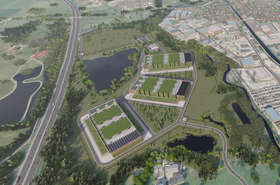Concerns about the resilience of the United Kingdom’s critical national infrastructure (CNI) are increasing, and data centers are coming under growing scrutiny as a result.
As officially recognized components of CNI, they underpin essential services from banking to healthcare, but are increasingly exposed to a combination of ever-expanding cyber threats, rapidly escalating power demand, and an electricity grid under strain from the ongoing energy transition.
The expanding threat landscape
Cybersecurity is one of the biggest threats to data center continuity today, and as their networks evolve, their complexity grows, posing greater challenges for effective management and making the implementation of robust security measures ever more urgent.
Resilience is threatened by increasingly sophisticated techniques, including ransomware and distributed denial of service (DDoS) attacks. Meanwhile, the internal threat landscape is expanding as employees unwittingly succumb to phishing attempts and disgruntled individuals deliberately compromise network security measures. The constant demand for software updates further exacerbates vulnerabilities, amplifying the risk of cyberattacks, which continue to grow in volume and scale.
While cybersecurity is, and should be, top of mind for data center operators, there is a raft of other issues that put continuity at risk. Grid outages are common in some regions, and when combined with failures in the backup chain, such as uninterruptible power supplies (UPSs) not holding or generators failing to start, they can impact data center resiliency.
Cooling systems are another key point of failure. Risks include equipment breakdowns (such as chillers, pumps, or fans), poor airflow that creates hot spots, and environmental pressures such as heatwaves or restricted water supply. Since cooling is power-intensive, outages can also disrupt cooling capacity if backup systems are under-provisioned. Even with redundancy, a failure in multiple components or a maintenance error can cause rapid temperature rises and threaten uptime.
The ever-growing digital demands on these key data center systems are adding to the threat to uptime. AI and machine learning workloads rely on immense computational power, but aging systems were never designed to handle the resultant increased power, density, and heat output.
The risk to data center continuity from threats like these is real. In June 2024, the UK government’s own Defra data center suffered a four‑day power outage due to an issue at a privately owned facility housing its services. More recently, in May 2025, X (formerly Twitter) experienced a widespread service outage blamed on a data center failure, affecting thousands of users worldwide and highlighting how even major platforms remain vulnerable to infrastructure failures.
To reduce the likelihood of such disruptions and to mitigate their impact when they do occur, resilience – and the network management technologies that enable it – should be central to data center operations.
Building resilience for the future
When assessing the systems and solutions they need to deliver this resilience, operators should look to solutions that allow them to maintain service continuity even under the most adverse conditions. In this context, they should consider implementing network resilience tools to anchor their operations, including real-time monitoring, configuration management, automated failover, path diversity, and secure remote access.
At the same time, data center operators should be focused on designing infrastructure that can meet the increasing demands posed by AI workloads and emerging technologies. That focus is key to ensuring resilience.
By incorporating software-defined networking (SDN) into their data center designs, operators can ensure security and scalability, while also delivering a flexible control plane that dynamically adjusts to evolving workloads and changing network conditions.
With power availability in the UK and globally becoming less predictable, the data center industry cannot afford to depend on reactive measures when the continuity of critical services is at stake. Aging infrastructure, escalating digital demands, and increasingly complex cyber threats mean that resilience must be continuously reinforced.
Read the orginal article: https://www.datacenterdynamics.com/en/opinions/from-risk-to-resiliency-securing-continuity-in-uk-data-centers/









